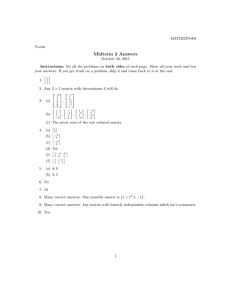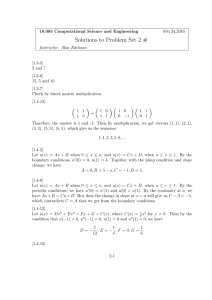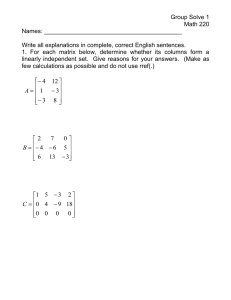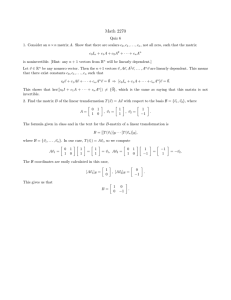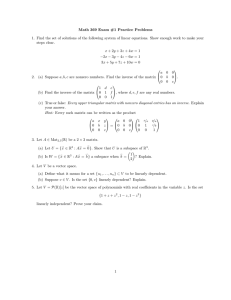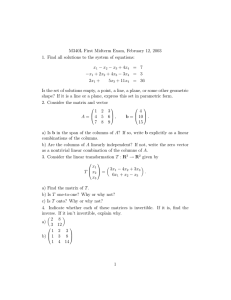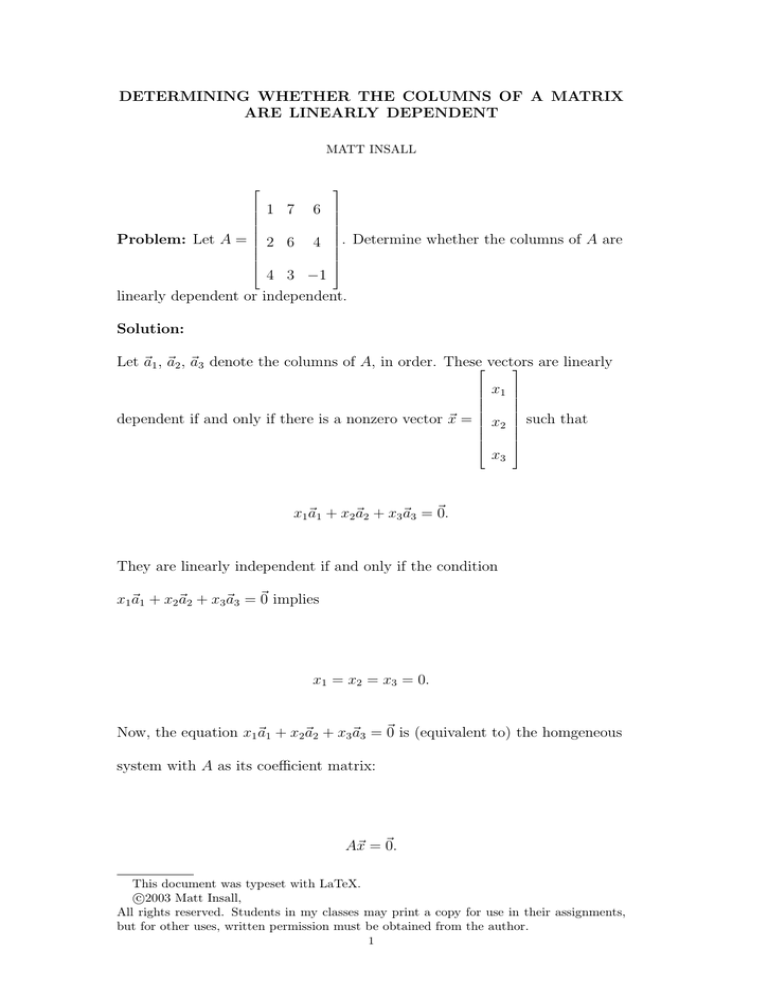
DETERMINING WHETHER THE COLUMNS OF A MATRIX
ARE LINEARLY DEPENDENT
MATT INSALL
1 7
Problem: Let A =
2 6
6
4
. Determine whether the columns of A are
4 3 −1
linearly dependent or independent.
Solution:
Let ~a1 , ~a2 , ~a3 denote the columns of A, in order. These vectors
are linearly
x1
dependent if and only if there is a nonzero vector ~x = x2
such that
x3
x1~a1 + x2~a2 + x3~a3 = ~0.
They are linearly independent if and only if the condition
x1~a1 + x2~a2 + x3~a3 = ~0 implies
x1 = x2 = x3 = 0.
Now, the equation x1~a1 + x2~a2 + x3~a3 = ~0 is (equivalent to) the homgeneous
system with A as its coefficient matrix:
A~x = ~0.
This document was typeset with LaTeX.
c
2003
Matt Insall,
All rights reserved. Students in my classes may print a copy for use in their assignments,
but for other uses, written permission must be obtained from the author.
1
Thus, to determine whether the columns of A are linearly dependent, we will
perform admissible row operations on the matrix A, to row-reduce it to
reduced row echelon form:
R1
1
R2 − 2R1
A ========⇒
0
R3 − 4R1
7
6
−8
R1 + 87 R2
− R82
−8
=========⇒
R2
R3 − 25
3
0 −25 −25
1 0 −1
0 1 1 .
0 0
0
It follows that the system A~x = ~0 is equivalent to the following simpler
system:
x1 − x3 = 0
x2 + x3 = 0
0 = 0.
In this system, the variable x3 is free, so a nontrivial solution of the system
A~x = ~0 may be obtained by substituting any nonzero number for x3 , and
backsolving then for x2 and x1 . For example, a nontrivial solution of the
system A~x = ~0 is given by
−1
~x =
1 .
−1
Hence the columns of A are linearly dependent. Note that if we use the
above solution of the system A~x = ~0, we may express ~a3 as a linear
combination of ~a1 and ~a2 , as follows:
~a3 = −~a1 + ~a2 .

